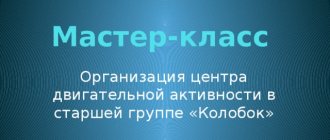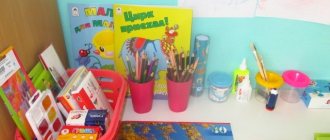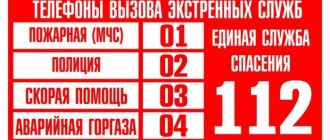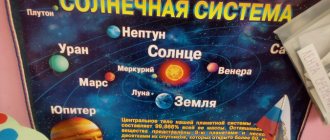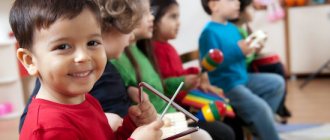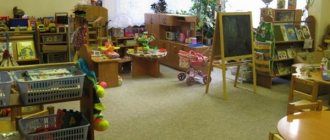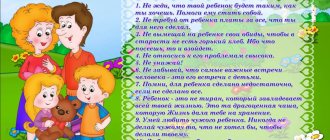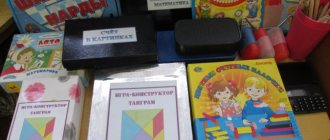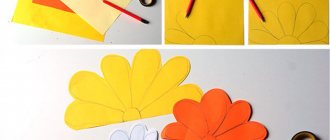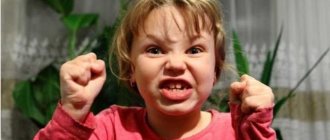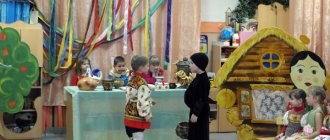Organization of experimentation centers in preschool educational institutions
Natalya Ilyina
Organization of experimentation centers in preschool educational institutions
To organize the experimental activities of children, teachers of the Municipal Budgetary Preschool Educational Institution “Novolyalinsk City District” create a developing subject-spatial environment taking into account the Federal State Educational Standard of Preschool Education, which provides children with the opportunity to conduct experiments, observations, and experiments.
Experimentation centers have been created in each group. These centers are a kind of mini-laboratories for children's research. The centers are designed for both organized and independent research activities of children.
Experimental centers are equipped with:
— natural material
(stones, clay, sand, shells, feathers, cones, saw cuts and leaves of trees, seeds, etc.);
— recycled material
(pieces of leather, fur, fabric, plastic, wood, cork, etc.);
— medical material
(pipettes, flasks, syringes without needles, measuring spoons, rubber bulbs, etc.);
— assistant devices
(magnifying glasses, scales, hourglasses, compass, magnets, various vessels);
— other material
(mirrors, butter, flour, salt, sugar, strainers, rulers, measuring tapes, etc.);
— additional equipment
(children's robes, oilcloth aprons, towels, storage containers).
The centers have a place for storing instruments and materials, as well as a place for conducting experiments.
The material in the experimentation centers corresponds to the developmental characteristics of children. Also, there is material and equipment for conducting more complex experiments, taking into account further developments.
In the experimentation center of the junior group “Pantry of Miracles”, material for the sensory development of children has been collected: various pieces of fabric, fur, rubber toys, natural materials (cones, large stones, scales, material for blowing, clothespins of various colors and sizes, a collapsible nesting doll, for development auditory perception - jars with contents to the sound of jingling and rustling.
There is a “treasury” - a sensory box with objects that interest children with their brightness: beads, mini-toys, large colored wooden beads, a shell and more.
The sensory box develops curiosity, imagination, concentration, and fine motor skills in children.
In the middle group there is a laboratory called “Pochemuchki” . Added natural materials: feathers, sand, soil, various seeds, shells, stones, acorns, leaves. Medical material is used: pipettes, flasks, syringes, rubber bulbs. Equipment used: hourglasses, magnets, magnifying glasses, sand mill, various vessels.
The children look at the collection of insects with interest.
To develop tactile sensations in games, a “sensation box” is used, where small toys are placed that can be detected by touch with the hands.
Pupils carefully observe the multi-colored balls that grow and expand in the water.
For sensory development, Kinder Surprise containers with holes are used, inside which substances and herbs with different odors are placed.
In the senior group, a “Lyuboznayki” laboratory has been set up . The center is supplemented with objects of various sizes, shapes, weights (large beads, Kinder surprise eggs, multi-colored stones, magnets).
Containers with water and some food products (sugar, salt, starch, flour, butter) are freely available. A sufficient amount of “waste material”: ropes, laces, braid, wooden spools, clothespins, corks. Helper devices: magnifying glass, hourglass, microscope, magnifying glasses, mirrors, sieve, funnels, ice cube trays.
Oilcloth aprons, sleeves, rubber gloves, and rags are used.
Children have the opportunity to view educational books.
In the preparatory group, “Uncle Owl’s Secret Laboratory” was created . The scientific center is supplemented with measuring instruments (compasses, various rulers, hourglasses, volumetric flasks).
Children have the opportunity to look through educational books, thematic albums, and use diagram cards to conduct experiments on their own.
During the academic year, various collections are organized: river, sea and decorative stones, shells, colored sand.
When equipping the experimentation centers, the following requirements were taken into account:
- sufficiency,
— accessibility of location,
— safety for the life and health of children, sanitary standards. Each child is familiar with the rules of behavior and the procedure for conducting experiments.
One of the main tasks of mini-labs is to teach children to ask questions, search for and find answers on their own.
Organized experimentation centers give children the opportunity to demonstrate independence, increase the level of cognitive interests, and activate thought processes. Our students enjoy playing, experimenting, and learning.
